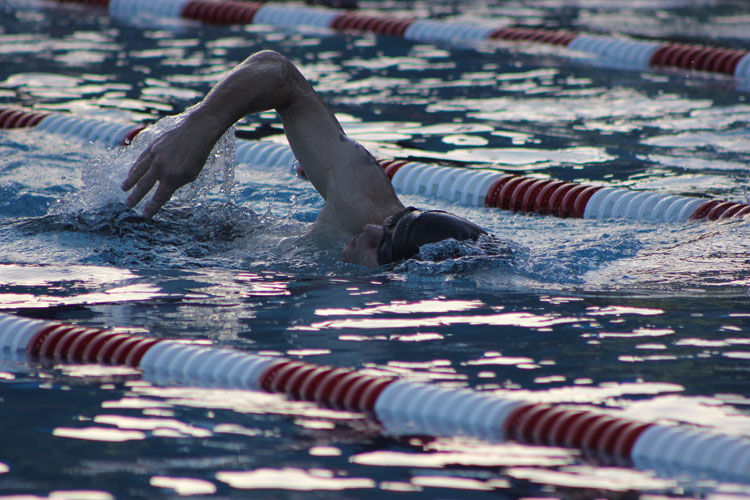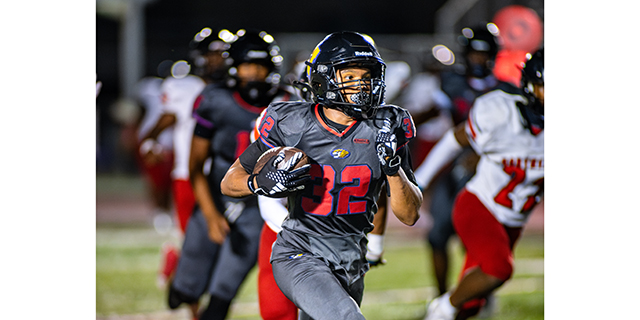Tri Tri Again
Published 7:00 am Friday, October 14, 2016

- Tri Tri Again
The Three-Pronged Race That’s Taking The Running World By Storm
By Amanda Jean Elliot
This year it is estimated that on registrations alone, triathletes in this country will spend more than $20 million. Most triathletes compete in about five events a year.
br
It’s a whopping statistic considering the first triathlon was held just 40 some years ago in San Diego in 1974. Today, more than 550,000 people are members of the governing body of triathlons — USA Triathlon. The three-pronged sport that includes running, swimming and biking has grown tremendously. The aforementioned membership was just 100,000 in 1998. It is estimated roughly 2 million people participate in triathlons, according to the Sports and Fitness Industry Association.
br
Each event is different, just as each marathon is different. Some Ironman competitions include a full marathon for the running portion; others are a far shorter distance. The sprint triathlon includes a 500-meter swim, a 12-mile bike ride and a 3-mile run. And the reason behind each triathelte’s pursuit of this particular endurance event is different. We check in with some local athletes to learn why triathlons have captured their attention.
br
For local nutritionist Yvette Quantz the very thing that could have put her out of the running game entirely is what pointed her toward triathlons.
br
“I think they’re fun,” Quantz says simply. “The training is good for your body. The cross training is really good. I love the diversity and I think that’s what makes it fun.”
br
A longtime runner, Quantz was challenged when an injury sidelined her from her go-to activity. “I started swimming and I did it for four to six months,” says the mother of two. “I couldn’t run and I didn’t have a bike at the time. And then I started running a little bit again. My husband gave me a bike for Christmas.”
br
And the runner began her journey in triathlons. “I can still run and I love to run. But, I haven’t been injured since I started doing the cross training,” Quantz says.
br
Cross training is one of the big selling points for triathletes. But, for many it’s more than even that. “I think it’s good for the mind and body,” says triathlete Peter Vizzi. It’s my entertainment. It’s a social outlet. I’ve always been athletic, but for me the swimming is the hardest part.”
br
For Mike Alexander, the catalyst for competing was fairly social. “Peer pressure,” he says with a laugh. It’s been 12 years since the runner started doing triathlons, while he’s been racing for more than two decades running in marathons including the famed Boston and New York marathons (and more than once).
br
He continues to travel all over to race, but sticks closer to home for triathlons — he’s completed between 20 and 30 to date.
br
“Coordinating all the different aspects of transitions and equipment … it’s logistically tougher than running a race,” the local doctor says.
br
It may have been peer pressure that set him on his first course, but it’s been something akin to Quantz’s reasoning that kept him competing. “It’s been more fun and laid back than the marathons. The most fun is getting to know people you train with and compete with and the social aspects of it,” Alexander says.
br
For Quantz the emotional aspect of completing a triathlon was not just social and it wasn’t just personal to her own accomplishment. Conquering the three-prong race spoke volumes to her two daughters who watched her entire journey from injury to victory.
br
“I like goals and signing up for races does that. The next one is the Cajun Man. My girls remember me being injured and getting better. It reminded them to never give up. I would ask, ‘Remember when I couldn’t walk. But, I kept going and I didn’t give up on my self?’ I want to show them that whatever it is – keep going. Whatever they want, go for it and don’t give up. That’s a big incentive,” Quantz says.
br
br





